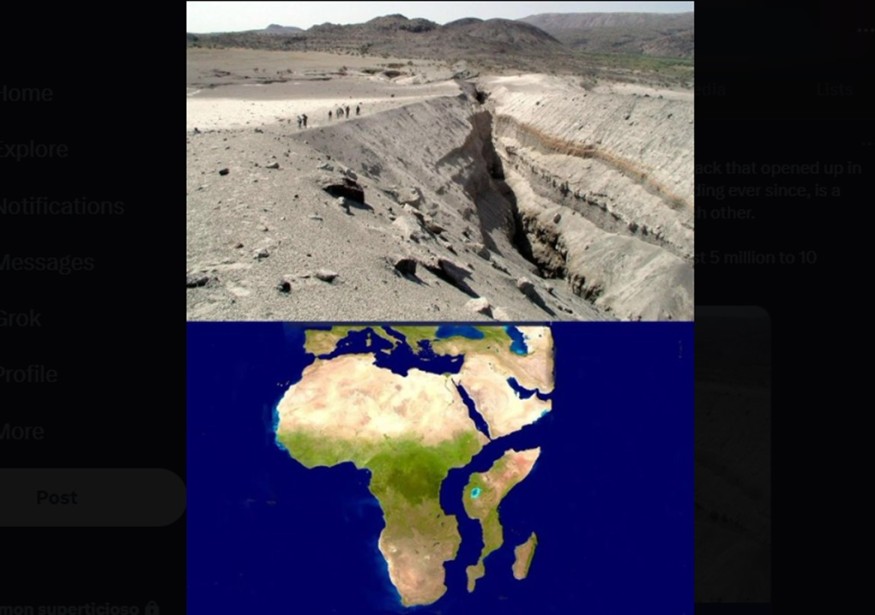
A dramatic transformation is underway in Africa, where the continent is slowly splitting in two, paving the way for a new ocean to form.
This geological event is centered in the Afar region of Ethiopia, where the earth's crust is pulling apart due to the movement of tectonic plates.
Scientists Witness Early Stages of Africa's Continental Breakup
The East African Rift (EAR), a massive crack in the earth's surface, is at the heart of this phenomenon.
Discovered in 2005, the 35-mile-long fissure highlights the region where the Somali and Nubian plates are gradually moving away from each other.
This process, driven by heat from the Earth's mantle, mirrors the mechanism that created the Atlantic Ocean millions of years ago.
The Afar region is one of the few places on Earth where rifting can be observed on land. Typically, such events occur underwater. The rifting process has been active for millions of years, shaping iconic African landscapes like the Great Rift Valley, Mount Kilimanjaro, and the Red Sea.
In 2005, a volcanic eruption at the Dabbahu volcano triggered a series of earthquakes, rapidly widening the rift. Within just ten days, the ground split open, forming a 26-foot-wide fissure, EarthlyMission said.
This dramatic event provided scientists with a rare opportunity to witness the initial stages of a new ocean's formation.
Since then, the rift has continued to expand, though more slowly. Occasional bursts of activity, including volcanic eruptions and landslides, have revealed new cracks and fissures. Satellite images have shown the rift widening by several centimeters annually.
Africa's Splitting Plates May Birth a New Ocean, Reshaping the Continent
While the complete separation of the Somali and Nubian plates is still millions of years away, researchers believe the process will eventually create a new ocean.
According to Express, the Red Sea is expected to flow into the region, connecting with the Gulf of Aden and forming a new body of water that will reshape Africa's landscape.
This rifting event isn't just a geological marvel — it has wide-ranging implications. The Afar region is home to unique wildlife, fossils, and artifacts that provide insights into human evolution.
The formation of a new ocean could also affect the region's climate, biodiversity, and socio-economic development.
The East African Rift serves as a reminder of the Earth's dynamic nature and highlights how much we still have to learn about the processes shaping our planet. Scientists will continue to monitor this evolving phenomenon, offering a front-row seat to one of geology's most captivating events.
© 2025 NatureWorldNews.com All rights reserved. Do not reproduce without permission.





